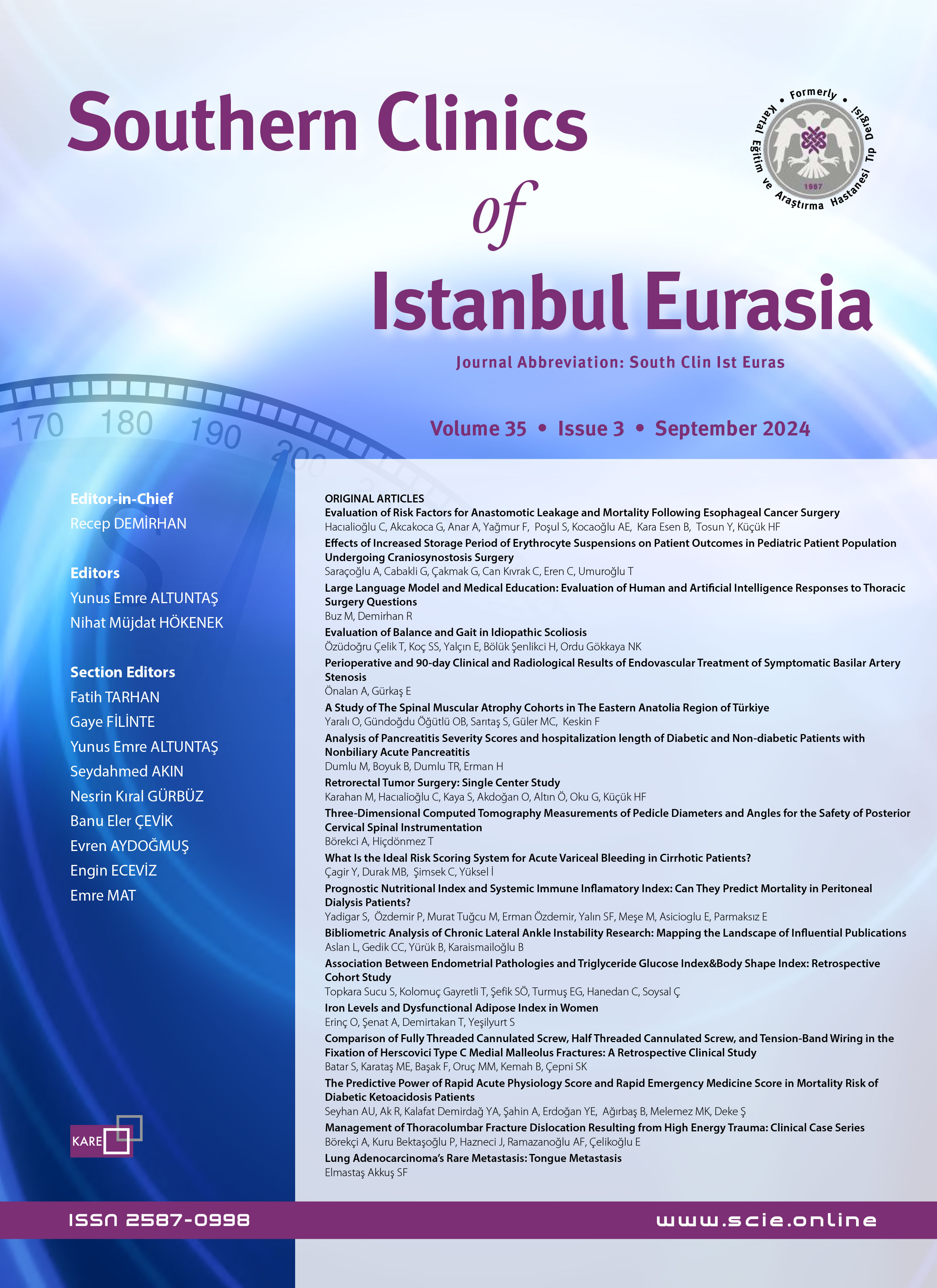ISSN : 2587-0998
Trakeastomal Stenoz Gelişen Total Larenjektomi Olgularında Çift Ters Z Plasti
Burak Karabulut, Hakan AvcıKartal Dr. Lütfi Kırdar Eğitim Ve Araştırma Hastanesi Kulak Burun Boğaz Hastalıkları Kliniği, İstanbulGİRİŞ ve AMAÇ: Total larenjektomi yapılan ve trakeastomal stenoz gelişen olgularda uygulanan çift terz Z plasti tekniğinin etkinliğini değerlendirmek.
YÖNTEM ve GEREÇLER: Bu çalışma retrospektif bir dosya analizi idi. Kliniğimizde Ağustos 2016 ve Ekim 2019 yılları arasında total larenjektomi sonrası gelişen ve çift ters Z plasti cerrahisi uygulanmış 20 trakeal stenoz vakasının dosya kayıtları incelendi. Hastaların dosya tetkiklerinden ameliyat öncesi ve ameliyat sonrası 1. ayda yapılan stoma çap ölçümleri çıkartıldı. Stoma çap ölçümleri mm olarak en geniş alınmış değer olarak dosyalarda mevcut idi. Ameliyat öncesi ve sonrası stoma çapları karşılaştırıldı.
BULGULAR: Yirmi hastada da stoma çap genişliği istatiksel olarak artmış idi. Yirmi hastanın ameliyat öncesi en geniş stoma çap ölçümleri 12±1.2 mm (aralık 10−14) iken ameliyat sonrası bu ölçümler 21±1.3 mm (aralık 19−24) olarak tespit edildi (p=0.01). On hastada (%50) daha önce uygulanmış olan ses protezi mevcut idi. Bu hastalar ses protezlerini ameliyattan hemen sonra problemsiz olarak kullanmaya başladı. Tüm hastalar ameliyat sonrası 1. günde sorunsuzca taburcu edildi. Ameliyat sonrası süreçte hiçbir hastamızda stoma darlığı için kanül kullanma ihtiyacı olmadı. Bu tüm hastalarımızda stoma cerrahisinin başarılı olduğunu göstergesi olarak kabul edildi.
TARTIŞMA ve SONUÇ: Çift ters Z plasti tekniği, total larenjektomi sonrası gelişebilen trakeal stenoz olgularının cerrahi olarak düzeltilmesinde kullanılabilecek etkili bir yöntemdir.
Anahtar Kelimeler: Stomaplasti, total larenjektomi; trakeal stenoz.
Double Reversing Z Plasty for Tracheastomal Stenosis After Total Laryngectomy
Burak Karabulut, Hakan AvcıDepartment of Otolaryngology, Kartal Dr. Lütfi Kırdar Training and Research Hospital, İstanbul, TurkeyINTRODUCTION: To assess the efficacy of double reversing Z plasty technique for stomaplasty in patients who had total laryngectomy.
METHODS: his was retrospective chart review of 20 patients having tracheostomal widening procedure`double reversing Z plasty` at our department between August 2016 and October 2019. Widest length of the stoma was measured in mm for each patient preoperatively and at postoperative 1st month respectively. The results were compared.
RESULTS: All 20 patients showed statistically significant widened tracheostoma without any complication. Mean diameter of the stoma was measured as 12±1.2 mm (range between10−14) and 21±1.3 (range between 19−24) mm preoperatively and postoperatively, respectively. The difference was statistically meaningful (p=0.01). 10 of patients (50%) had voice prosthesis in previous total laryngectomy procedure and their phonatory protshesis functioned well after the surgery. All patients were discharged at postoperative day 1. There was no need to wear laryngeal tube which shows successful amelioration of the disease in postoperative period.
DISCUSSION AND CONCLUSION: Double reversing stomaplasty is an effective technique to manage tracheastomal stenosis in total laryngectomized patients without any complication specific to the technique.
Keywords: Stomaplasty, total laryngectomy; tracheal stenosis.
Makale Dili: İngilizce



















